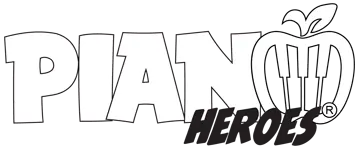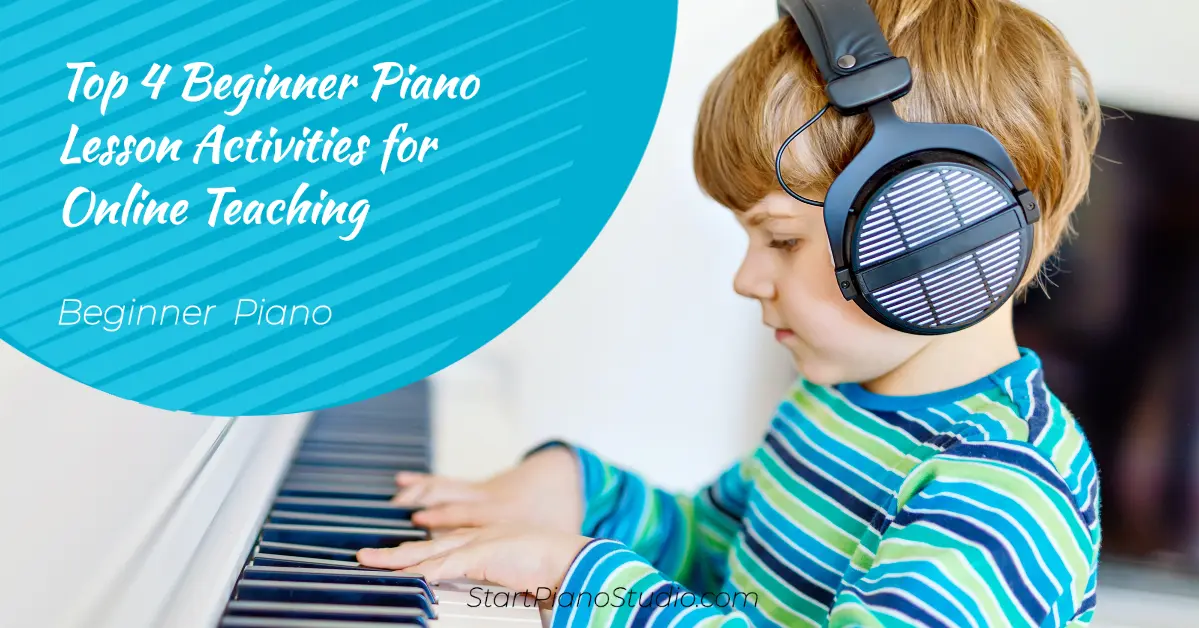Welcome to the Piano Heroes blog. Today we are entering the realm of online piano lessons. We do know that online lessons may not be your favourite way of teaching the piano and arguably the most effective one. However, there are times when they are the only way and we are here to help. How can digital products help in a situation like this? Remember that they are digital “by design” ☺️. Therefore some can be used as-is via tablets or computers. Others, printed at home and played against parents or siblings. With or without supplements you can make your online lessons enjoyable. And below we list a few types of activities to achieve that. We hope you and your students like them!
1. Worksheets
One of the easiest ways to interact with young students while teaching the piano online is to use worksheets. A teacher can share a download link with the student’s parents ahead of the lesson and ask to download or purchase it if it is a commercial product. If you use Zoom and both have an iPad with Apple Pencil, working on the worksheets comes very close to face-to-face interaction and no printing is involved. You can find many worksheets on the Start Paino Studio website, one-page printables as well a notespeller book with a Studio license to keep your student practicing every day.
Start Piano Studio FREE Printables
2. Simon Says… Activities
This famous activity allows reviewing a wide range of musical topics from keyboard geography to chord building and is easy to incorporate into online lessons.
Find a note on the keyboard – asks the student to find and play D. Mid C. Bass F. Treble B.
Landmark Notes- asks the student to find and play 5 landmark notes in the bass and treble clefs.
Skip/Step Limbo – asks the student to find and play mid-C, then step up, step up, skip down, step down, etc.
Intervals – this activity is similar to Skip/Step Limbo only using intervals. The teacher asks the student to find F and play per 5 up, min 3 down, etc.
Chords – propose to the student to build a chord on G! Ask if it is a major or a minor chord. How can one change it to a minor chord? Can they create an inversion of this chord?
3. Piece Analysis
This activity is good for learning a new piece, as well as for sight-reading. The questionnaire can include the following:
What is the time signature of this piece? How many measures are there in the piece? Are there any accidentals in the piece? What are the dynamics? Which hand starts? What about articulation? Can you play ascending right-hand motive in m 4? Etc.
4. Listening Activity
Low/high notes – play a note and ask the student to identify it as low or high.
Melody direction – play a short melodic pattern and ask the student to identify if the music goes up, down or stays in the same place. To make it more interactive use these cards from Start Piano Studio.
Major/minor chord recognition – play a chord and propose to define it as major/happy or minor/sad.
Melody playback – this activity is one of the best to teach the student melody playback. Name the 3 (5) notes which are going to be used. Play a pattern 2 times and ask the student to play it back to you.
Intervals – chose intervals to work on and ask the student to sing, hum or identify the interval.
More Tools
Piano Heroes Club
Join our Facebook community for more printables and teaching aids for young beginners.
Stay Positive!
Are you ready to try some of those online activities with your students? If so we would love to hear back from you. Tell us how it went, what worked, and what didn’t work as expected, or if you experienced any challenges. Remember that we are here designing more adorable products to make your piano lessons effective and exciting at the same time in both online and offline settings.

